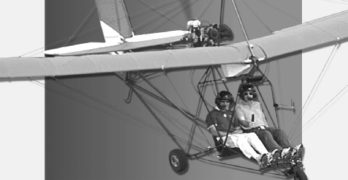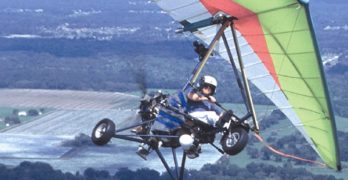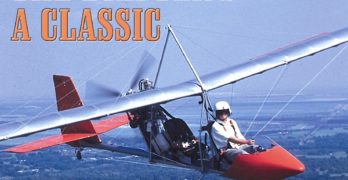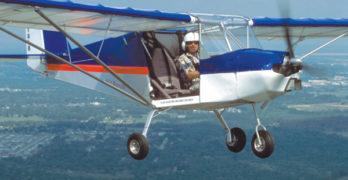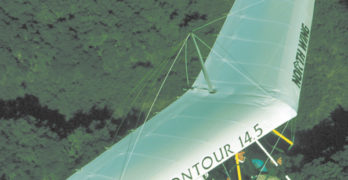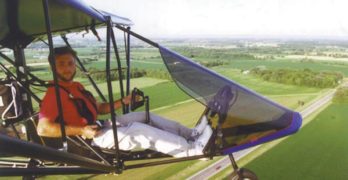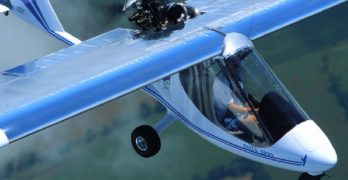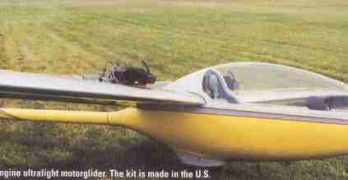You’ve heard it before: Quicksilver is back! Again and again we’ve heard this, yet it seemed to be an apparition, a mirage in the desert. As soon as you thought the company had put its financial affairs in order, along came another disappointing tale of what was politely called “corporate restructuring.”
In fact, the changes were often more provocative than substantial, but they gave the impression of a company that had lost its way. The worst thing that happened was that customers became unsure if they should send deposit money.
This was not a good place to be in the ultralight industry. Companies work hard to establish good reputations. They know those good vibes can disappear as quickly as a wing nut in tall grass.
The 1999 reincarnation of the company is called Quicksilver Manufacturing. Previously, the company had been called Quicksilver Enterprises and Quicksilver Aircraft (and before that a series of Eipper iterations, named after founder Dick Eipper).
Search Results for : BRS parachute
Not finding exactly what you expected? Try our advanced search option.
Select a manufacturer to go straight to all our content about that manufacturer.
Select an aircraft model to go straight to all our content about that model.
Aerotrike
Until recently, we heard little from South Africa. Under the country’s apartheid (racial segregation) rule of the past, South Africa disappeared off the radar so far as most Yankee pilots knew. Our government instituted economic sanctions so that few, if any, South African products appeared in America.
Apartheid is over, and with it the isolation of that southern hemisphere country and its people. In recent years, we’ve seen a growing number of products arrive from the way down under country. Perhaps you’re not surprised to hear that South African ultralight builders are also making a mark on American aviation. Welcome to the modern age of globalization.
No Pushy Peddler
You probably already know of Rob Rollison. He garnered attention in April ’95 by flying his Air-Bike from Indiana to Lakeland, Florida.1 The trip set no records – Ian Coristine, Dave Goulet and Don Zank flew 2-seat Challengers 2,400 miles (round trip) from Moline, Illinois to Lakeland a decade earlier – but in an open-cockpit ultralight, no doubt Rob’s 870-mile (each way) flight seemed longer.
Super Drifter
The original Drifter was one of the ultralight industry’s flagship aircraft. Hatched by early entrepreneur Dennis Franklin, the Maxair Drifter enjoyed immense popularity. Several reasons exist for the Drifter’s popularity, and these were enough for Leza-Lockwood to offer a rebirth to the design.
Déjà Vu All Over Again
The Drifter is a tough design. The basic airframe consists of a lower boom tube that supports the pilot at the front and the large empennage at the rear with an engine midship. Because the separation is longer than some similar designs, the Drifter boasts a high level of stability that should please most pilots.
Secured to the boom by a series of triangulated tubing structures, the wing is classic Klaus Hill. This prolific designer from the early ’80s died in an unfortunate accident many years ago, but not before putting his indelible mark all over ultralight aviation. Klaus is directly responsible for the wings of the Weedhopper, Hummer, Humbug and SuperFloater.
French Quick-Build 2 Seater
One of the most popular club planes in France is widely used by instructors in that country. Now we welcome the Sky Ranger to North American skies.
In France, as with much of Europe, many ultralights are owned by aero clubs which frequently manage recreational airfields throughout the continent. Run a little differently in each location, they provide common ways for average pilots to fly and for newcomers to be introduced to flight. Virtually all aero clubs provide instruction, often through associated flight schools. Clubs also own and maintain aircraft – lots of them. This has worked especially well with sailplanes; Europe has more than twice as many sailplanes as the United States and several times the pilot population. Ultralight enthusiasts have followed this example.
The Sky Ranger arrived in the mid-1990s at French ultralight aero clubs that dot the landscape, and has done very well. U.S. importer Sabre Aircraft says, “It’s the most popular ultralight in France, especially with the flight schools.” In more than just 6 years, the company claims deliveries of about 500 aircraft.
North Wing Design’s Loaded Apache
North Wing Design has a history that stretches back into the mid-1980s when 23-year-old owner Kamron Blevins started making hang glider wings. After gaining experience with other companies and dabbling with his own ideas along the way, Blevins started North Wing Design in 1996 to provide trike wings.
His timing was good. After years of work to encourage Americans to consider trikes, various suppliers – many from Europe – were pleased to see their efforts pay off. Trike numbers began to increase about the time North Wing Design got into business. At first, Blevin’s new company created specially built trike wings for several chassis suppliers and the enterprise grew.
With increasing sales of wings to others and with a rising tide of trike interest lifting all manufacturers, North Wing Design decided to go all the way. Their first full trike ultralight offering in 1999 was the Maverick, a slick single-seater that met FAR Part 103 parameters with a Rotax 447 (see “Pilot’s Report: North Wing Design’s Maverick Trike,” September 1999 Ultralight Flying!
Aero-Lite 103
Manufacturers in the ultralight industry believe they know what pilots want or what they will buy, anyway. A 2-seater is usually part of the answer. But, in fact, many industry watchers are wrong.
While many observers make the statement, ÒNinety percent of ultralights are 2-seaters,Ó statistics tell another story. Nearly 40% of ultralight and microlight aircraft sold in the U.S. are single-seaters, according to Ultralight Flying! magazineÕs surveys of manufacturers. Despite the polling results, however, those experts have a point. Two-seaters do represent the majority of ultralights and microlights sold.
Yet, just when you think 2-seaters are going to take over the whole market, along comes a new trend. Maybe it was FAAÕs lack of action on Part 103 changes, or maybe manufacturers simply decided to take on the challenge of staying within 103Õs tight weight, speed and fuel quantity restrictions. Whatever the correct answer, it doesnÕt change the fact of a growing population of Part 103 ultralights.
Titan Tornado
An Experimental ‘fighter jet’ that any pilot could love That vast majority of general aviation pilots who won’t even think about building their own plane has missed quite a revolution.
The FAA says approximately 25,000 aircraft are registered as Experimentals. That’s 15% of the GA fleet.
Building isn’t what it used to be. You no longer need to master the skill of reading engineering prints (plans), nor must you search high and low for parts.
These days, most registered Experimental aircraft are built from kits. Many are well-fabricated packages that can be assembled in just a few hundred hours. That can mean as little as two or three hours a night, two to three days a week, for about a half-year. Not a bad investment for a truly unique airplane.
One sport pilot who enjoys flying his creations is Minnesota resident Al Reay. For Reay, building is a means to an end.
Gull flying in a new millenium
It is Mark’s design philosophy to make the most efficient aircraft he can, one that will use the least fuel. He defines himself as “a minimalist,” and this sentiment is carried throughout this beautifully optimized aircraft.
To me, Mark appears to have grown increasingly comfortable in his role within ultralight aviation. Relaxed and confident, he knows he has created a superior flying machine.
He also smiles a lot more these days in my opinion, thanks to a wonderful woman named Leslie who accompanied him to AirVenture 2000 in Oshkosh, Wisconsin. Married a year and a half ago, the two complement each other and make a good team.
No more tight squeezes
Perhaps it was this new personal relationship that motivated Mark to pay more attention to creature comforts. Notably, the Gull 2000 is wider than the previous single-seat or tandem two-seat Thunder Gull aircraft. Considering Mark is a lean and healthy vegetarian, his concern for broader pilots is no doubt appreciated.
Esprit
Meet the Esprit – a twin-engine ultralight motorglider.
Soaring enthusiasts who want to self-launch their aircraft are limited to simple hang gliders on one end and expensive motorgliders on the other. Performance for these machines ranges 15:1 to 50:1. To get one you’ll spend $5000 or $200,000. What you could not do is spend $20,000 to get medium performance*… until now.
Debuting his machine at AirVenture 2000 airshow, Dobro Hajek brings a modern soaring aircraft to the ultralight community. I believe he will also find significant interest from two other groups: sailplane and hang glider pilots. Each loves dedicated machines without engines but many will also prefer an aircraft that can launch itself.
Welcome, Esprit
With its distinctive compound-tapered wings and winglets and its dual engines with folding props, the sleek Esprit goes a long way past the Aero Dovron that Hajek (pronounced HAY-yek) once imported. The Straton D-8 was an interesting little motorglider with a high wing and struts but at 17:1, this inexpensive machine didn’t have the go power it needed to attract a solid market in the United States.
- « Previous Page
- 1
- …
- 16
- 17
- 18


